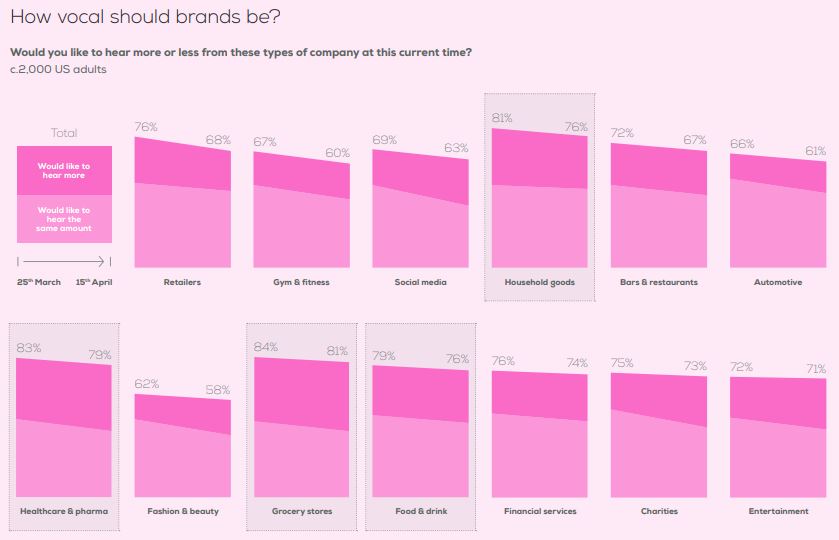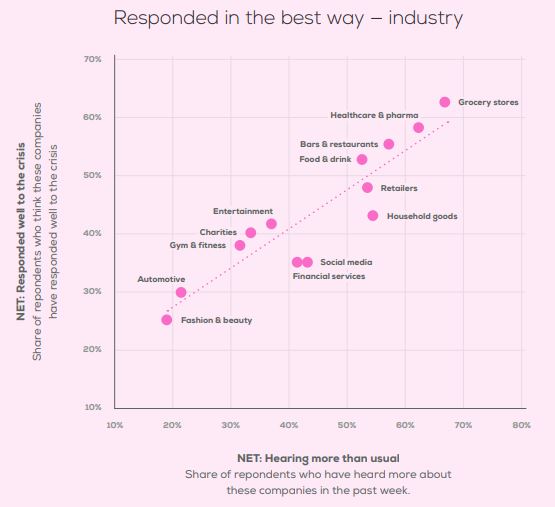Brand marketing in a crisis: what marketers can learn from 2020

As brands look to 2021 and Covid-19 cases spike again across the United States, marketers have much to learn from how consumers reacted to brand initiatives throughout 2020. The pandemic that has changed consumer behavior worldwide, sending people into fits of stockpiling toilet paper and filling the games cupboard in a vain attempt to keep children entertained while forced to stay at home during spring and summer months. Brands were faced with a difficult choice, keep marketing and spending money without knowing what would happen next or go quiet and wait for things to return to “normal”. If that wasn’t a confusing enough landscape to navigate, the development of the Black Lives Matter protests around the country pushed brand identity into a completely new realm as brands were forced to confront their principles.
Going back to the start of the pandemic, as the gravity of the situation sunk in and stay-at-home orders began to come into place, brands started to go dark, pulling advertising and waiting.
During April we saw 81% of large advertisers deferring ads and it was understandable. In a time where the world is facing a public health crisis, it’s hard to know what to say. If you carry on business as usual are you callously ignoring the peril facing the public, if you engage and recognize the pandemic will it come across disingenuous?
However, silence wasn’t what consumers wanted. What we found was that consumers still wanted to hear from brands. In fact, even near the start of the pandemic we were seeing that Americans wanted to hear the same amount or more from brands compared to usual. As time went on, although this eagerness to hear from brands started to taper off, there were still no calls for them to go silent.

Looking back to how consumers feel that brands reacted in those early months, we saw that it was the brands that showed themselves to be responsive to the pandemic, and clearly communicated how they were looking after their employees and their customers who were the ones that did well. For example, back in April we saw the perceptions of Walmart and Amazon rise following the announcement of their plans to hire a combined additional workforce of 250,000, along with hiring, bonuses and temporary pay rises for their workers.
There is an important balance to be made in how communications were handled as brands started to become more vocal. We saw that some brands overstepped the line, straying into feeling insincere with consumers becoming increasingly likely to say that brands were jumping on the bandwagon in their messaging. By May we were seeing 64% of consumers feeling this way and 49% felt they were taking advantage of the situation. At this stage, it was important to have a voice, but brands needed to be careful that they were being sensitive to the situation facing Americans. With finances being hit there were choices to be made on where to spend money, and half of Americans were expecting to spend less during the pandemic.

By the time we were in the height of summer, brands had a whole new challenge to face. As the BLM movement spread, polarizing debates across the States, we saw consumers’ expectations of brands were high. Seven in ten (71%) felt that brands should respond to the protests over police violence, but what they wanted brands to say was (like many issues facing the nation) polarized. For example, of Americans who were Republican-leaning in their political views and thought brands should weigh-in, a quarter felt that brands should prioritize a statement denouncing looting. However, on the other side we saw 29% of Democratic-leaning Americans wanting brands to prioritize a statement in support of racial equality.
So what should brands do? A fifth of Americans reported that they would stop buying from brands they felt were hypocritical when it came to their reactions to the protests, while half felt that in June brands were simply jumping on the band wagon. This is obviously a moral decision that brands need to come to, and will depend on a myriad of factors, but above all else consumers want them to be authentic and consistent.
Download the full Most Connected Brands US report here.
By Grace Tulip, Research Manager, Opinium



